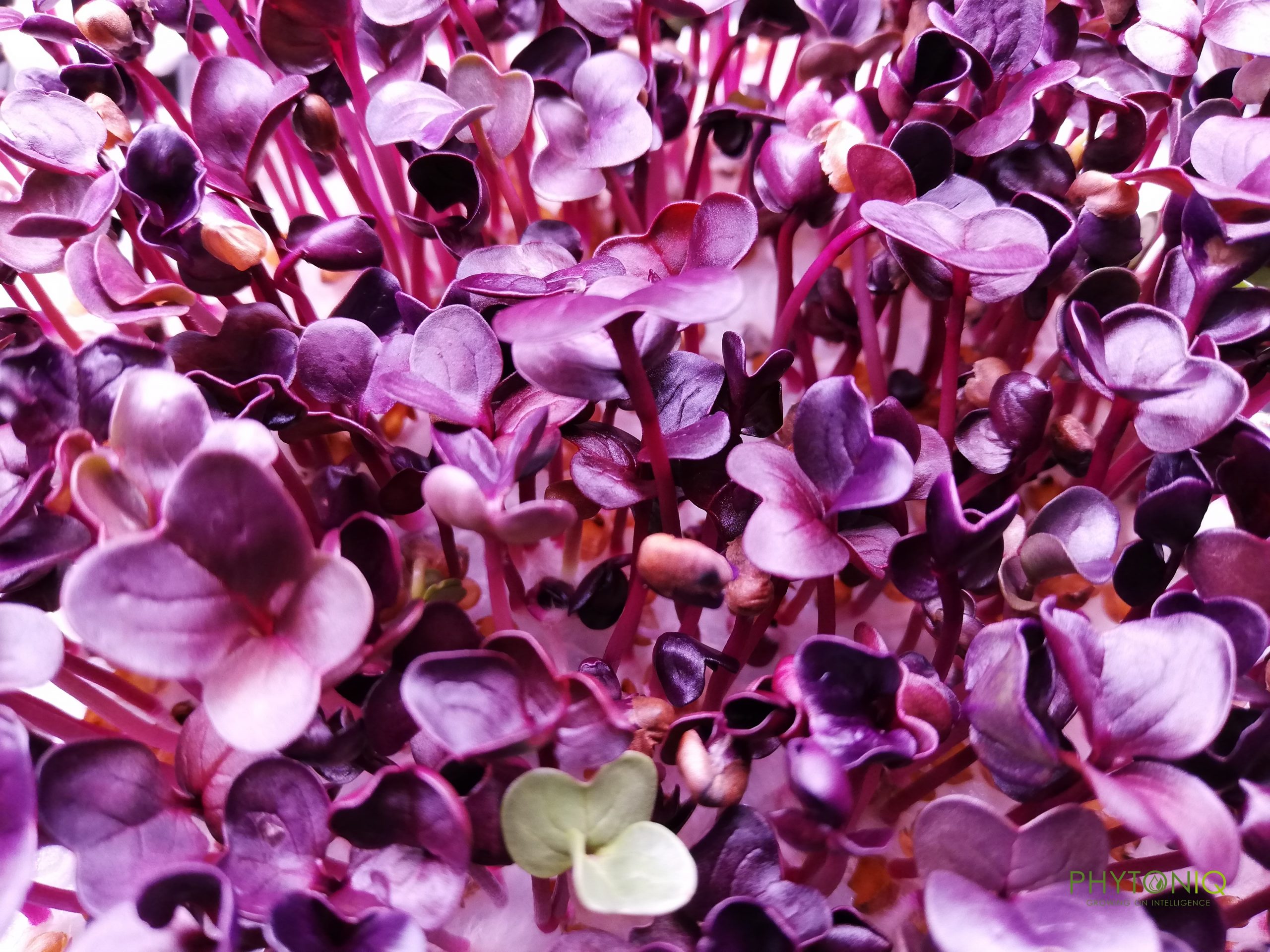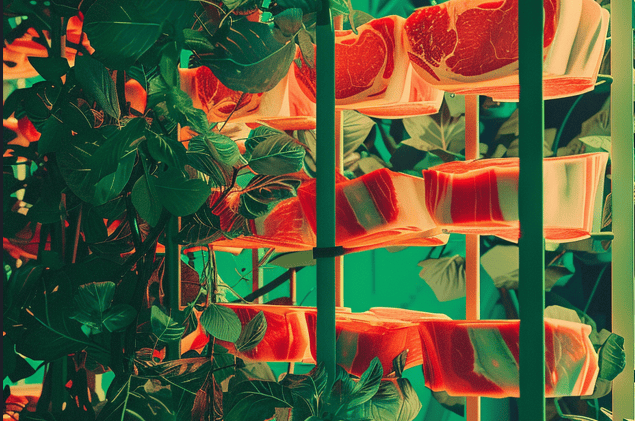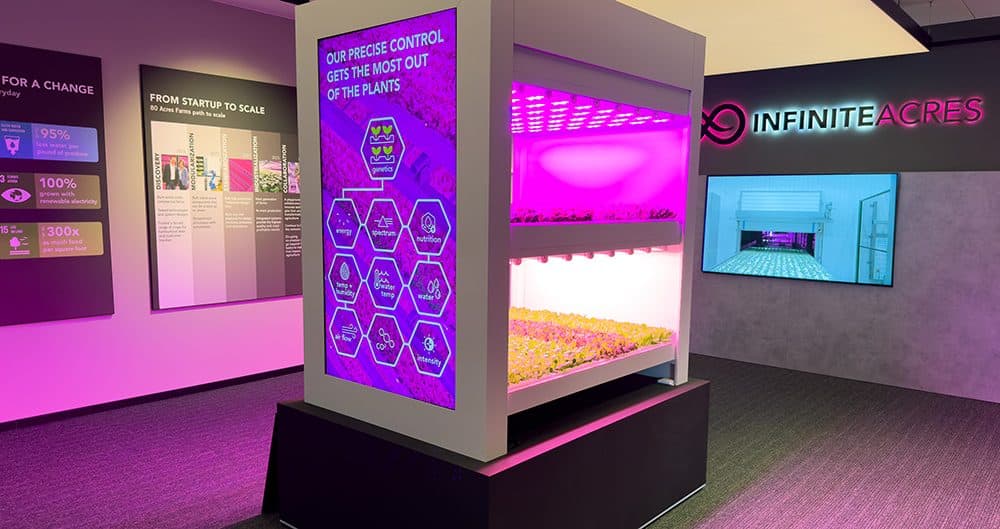
Vertical farming could solve several problems at the same time. Above all, it would bring vegetable production to urban centers, where the majority of the global population lives. Indoors you could produce vegetables all year round – even out of season. This would eliminate transportation routes and return soils back to nature, thus promoting biodiversity.
Existing vertical farming systems are automated, but still require manual intervention. Artificial intelligence (AI) is needed to make them industrially viable, says Markus Tauber, head of the Cloud and CPS Security Research Center and head of the master’s program in Cloud Computing Engineering at the Burgenland University of Applied Sciences in Austria. He is currently involved in the research project Agri-Tec 4.0 and wants to take vertical farming to the next level.
Also interesting: Sewage treatment plants as a valuable resource for vegetable cultivation in greenhouses
With vertical farming you can grow vegetables anywhere in the world. A small experimental factory developed especially for the research project shows how this is possible with a double-walled, lightproof 2.5 x 3 x 2.5 meter cube. No sun is needed inside the cube. Light and temperature conditions can be controlled. Because the cultivation is based on aeroponics, not even soil is needed – and only a fraction of the amount of water from conventional cultivation. Aeroponics means that the roots of the plants hang in the air and are sprayed with water. The water is mixed with nutrients and the plants grow much faster than in soil.

Vertical farming in the experimental laboratory (c) Agri-Tec 4.0
Artifical Intelligence
The irrigation robot in the cube comes from industry partner PhytonIQ Technology. This new company develops the technologies of its systems itself and also offers them for sale. Co-founder Martin Parapatits reports on the worldwide trend to combine vertical farming and artificial intelligence: “Big players are investing, but there is no ready-made solution yet.” Vegetable cultivation requires agile and flexible production structures that cannot be achieved through traditional automation. Tauber and his team contribute their expertise in sensors and sensor networking. They hope to use computer algorithms to ensure optimal plant growth. They also want to ensure data security.
“Vertical farming provides security of supply and only makes sense on a larger scale. With large areas, you can’t adjust every plant by hand. We answer the mathematical questions based on computer science.” – Markus Tauber
Strengthening the properties of plants
The demands on the intelligent control of vertical farming are manifold: In addition to the parameters of light already mentioned, temperature, nutrients, irrigation and wind must also be continuously coordinated. “Wind is a natural stress factor for plants. It causes the stem of the plant to strengthen and the plant to stand upright, explains Parapatits. “A similar effect can be observed in solar radiation: When a plant is in the shade, it grows towards the sun as quickly as possible, either upwards or sideways. This property can also be used in vertical farming – by controlling it. Under the influence of wind ventilation or different wavelengths of light, plants can be kept small and bushy or grown tall and slender. At the same time, the air movement dries out the plants’ surroundings. This reduces the risk of mold and encourages the plant to breathe out.”

Aeroponics root view (c) PhytonIQ GmbH
Model: The human nervous system
He and his team focus on small control loops that function like nervous systems in the human body. As an example he cites the Fight and Flight Response (Walter Cannon, 1915) which enables the body to react to danger. When the stress hormone increases, more blood flows into the muscles than into the digestive system. As soon as the stress hormone drops, the blood flow is regulated again and the blood flows back into the digestive system. This effect can also be observed in plants, says Tauber: “There are parameters that affect the environment and require a reaction. If the plant is too thin, it needs more wind. In our cube, this is an autonomous element or even a control loop.”
Monitoring with image data
In humans, the nervous system is responsible for controlling the body’s reactions. In the self-adapting system of the control loop, it is the MAPE-K architecture in which all actions due are based on five points: monitoring, analysis, planning and execution, and existing knowledge. For controlling the wind we monitor the plats via sensors and based on our knowledge, with the help of image data. We derive the information from the thickness and inclination of the stem. From a certain thickness and inclination, more wind is needed ,” explains Tauber.
Open Source Project
Agri-Tec 4.0 is basic research on the subject of vertical farming. It focuses on networked autonomous elements (control loops) and the extent to which these can be combined with other technologies – such as machine learning and neural networks. In cooperation with the Austrian Institute of Technology (AIT), its aim is to examine whether the safety criteria can be met when using MAPE-K. “Security and trust in data is important,” emphasizes Tauber. The TU Wien (Vienna University of Applied Sciences) contributes with its expertise in Internet of Things (IOT) infrastructure. The project will run for two years. The results will be published open source.

Wasabi production (c) PhytonIQ GmbH
Aeroponics as the most water-efficient system
The industrial partner PhytonIQ Technology intends to use the results to integrate artificial intelligence into its industrial software. It will take another four years before the system is tested and marketable. The company produces Wasabi and Microgreen for clients from the catering and healthcare industry. The facility has a surface area of 1200 square meters and the garden plots run over three to five floors.
For Parapatits the aspect of water saving is central, first because there are regions that are very dry and second because water is an increasingly scarce resource. Aeroponics is currently the most water-saving system, an effect that increases even more with a recirculating system: The water enriched with nutrients remains in use for several weeks in a recirculating system. Only then is it exchanged. Parapatits says: “We are already working on different solutions to be able to use the water even longer.” Since different plants have different requirements, hydroponics and fleece technology are also used.
Also interesting:
Interdisciplinary doctoral college wants to develop smart farming on an ecological basis







